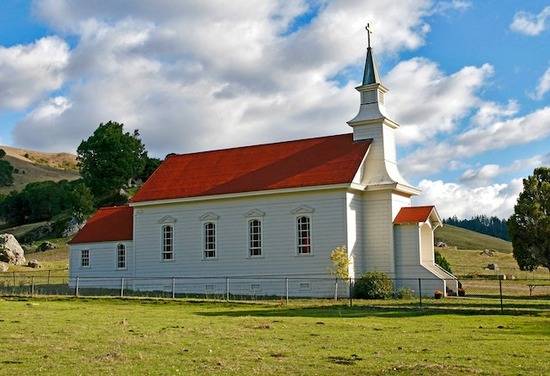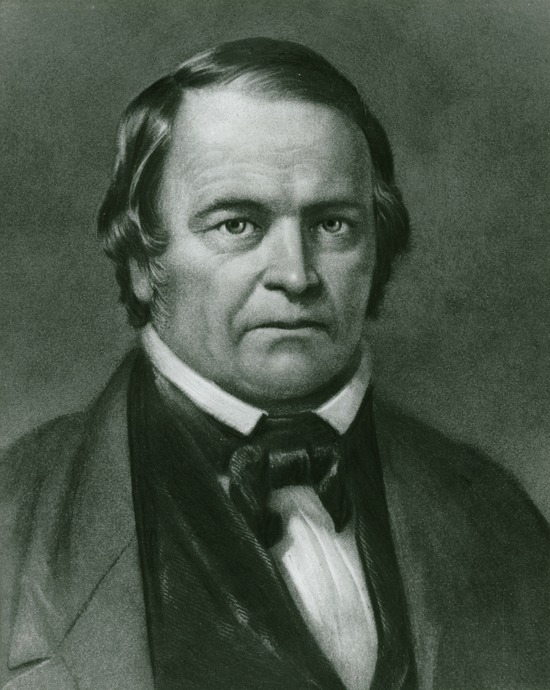The Protestant Roots of the Seventh-day Adventist Church
The Seventh-day Adventist Church is a Christian Protestant Denomination , born from an American religious movement that arose in the mid-19th century.1
And though the Adventist Church didn’t exist at the time of the Protestant Reformation, it emerged because of the Reformation and the principles the Reformers stood for.
Like the Reformers before them, the founders of the Adventist Church were earnestly studying the Scriptures. They were more concerned about following the Bible’s teachings than following tradition.
These believers weren’t looking to form their own movement, though. But when they were no longer welcome in their own churches, they began gathering in groups to study the Bible.
Eventually, the believers came to the conclusion that they’d only be able to grow by becoming an official denomination. And with that realization, they gathered together to establish the Seventh-day Adventist Church.
This page will trace the chain of truth from the Reformation down to the time of this denomination. We’ll cover:
- The Protestant pursuit of truth
- The chain of truth from the Reformation to the Great Awakenings
- Discoveries that led to the Millerite Movement
- The Adventist Church’s growth out of the Millerite Movement
- How Adventism upholds Protestant principles
- What it means to carry the torch of the Reformation
To get started, let’s look at what was happening in Christianity long before the Adventist Church was formed.
The Protestant pursuit of truth

Photo by Tima Miroshnichenko
The Protestant Reformation began as a small religious movement that spread throughout Europe during the 16th century. It started with a desire to pursue biblical truth, even if that truth went against the authority of church tradition.
What makes this movement so noteworthy is that it arose during a time when the Christian church had significant power and authority.
Back then, even kings feared the church’s power.
But the Reformers recognized that God and His Word were their ultimate authority. If church tradition stood in the way of that, they had to be willing to press on to greater truth, despite opposition. We’ll look at more details about the Reformation in a moment, but the point here is this:
The Reformation was all about seeking a greater and greater understanding of truth in God’s Word.
The idea is perhaps best summarized by John Robinson, a Puritan (and Protestant) who spoke to the pilgrims before they sailed to America:
“I charge you before God and His blessed angels to follow me no farther than I have followed Christ. If God should reveal anything to you by any other instrument of His, be as ready to receive it as ever you were to receive any truth of my ministry; for I am very confident the Lord hath more truth and light yet to break forth out of His holy word.”2
For human beings, this encouragement isn’t easy to follow. We get comfortable, and change is difficult.
But down through the centuries since the Reformation, small groups here and there have followed this counsel and formed a chain of growing truth.
The Protestant Reformation’s connection to the Great Awakenings
The Protestant Reformation began when a theology professor named Martin Luther nailed his 95 Theses to the door of the Wittenberg Church in 1517.3
This document called people to return to Bible truth, declaring that many of the teachings and traditions taught by the official church at the time (the Catholic Church) contradicted Scripture.
Luther was far from the first person to notice discrepancies between church traditions and God’s Word. Many years before his time, other Bible scholars, including John Wycliffe, John Huss, and Jerome of Faulfish, pointed out problems with corruption within the church,4 but it was Luther that truly sparked the beginning of the Reformation.
Much of this was due to the fact that Luther presented his theses in the age of the printing press, when documents and news could be reprinted at a faster rate and circulated more widely than ever before.5
With this technology, news of Luther’s theses spread and caused quite a stir, leading many people to question the official church and seek truth from the Scriptures (which had also become more available thanks to the printing press).6
Luther’s discoveries helped people realize they didn’t need a priest to come to God or to interpret Scripture for them. Instead, they saw that they could7:
- Freely come to God through Jesus Christ
- Study the Bible for themselves
Reformers like Martin Luther and John Calvin led the way in upholding Bible truths that had been neglected by the church. They attempted to reform the church from within, but the church was resistant.
The Austrian historian, Johann Loserth, explains that:
“More radically than any other party for church reformation [the Reformers] strove to follow the footsteps of the church of the first century and to renew unadulterated original Christianity.”8

Photo by Pixabay
These principles were so important to the Protestant Reformers that when faced with the choice to give up their beliefs or leave the church, they chose to leave.
Over time, the Reformers’ followers formed into groups, and eventually denominations. Looking back to the Reformation, we can see how these groups and churches carried a chain of truth as each successive one rediscovered and re-emphasized Bible teachings:
- The Lutheran Church9: They adopted and spread Martin Luther’s teachings. This included the truth that our salvation comes from accepting Jesus as our Savior, not from any good deeds we do. Another important truth was “the priesthood of all believers,” the idea that people don’t need a human priest to access God because everyone can access God through Jesus.10
- The Swiss Reformers11: These reformers, largely led by Ulrich Zwingli, emphasized the importance of sanctification, or the idea that Christians, are called to reflect the love and goodness of Christ throughout their lives. They also worked to reform Catholic mass. They rejected the idea that the bread and wine could be turned into the actual body and blood of Jesus by a priest. Instead, they thought of these objects as symbols of Christ’s sacrifice.
- Anabaptists12: These believers rejected the practice of infant baptism, holding onto the biblical truth that baptism is based on personal conviction and a declaration of faith.
- Sabbatarians13: These believers were the first reformers to keep the biblical seventh-day Sabbath.
- The Puritan Movement14: They emphasized the importance of following the Bible over church tradition.
- The Baptist Church15: This group of believers taught that baptism must involve full submersion in water.16 Roger Williams, who was a member of the Baptist Church for a time, promoted the truth of religious liberty—that everyone has the right to believe as their conscience dictates.17 He even went on to establish the Rhode Island colony, a place where settlers would be free to worship as they chose.18
- The Methodist Church19: They emphasized the importance of sanctification and having a personal faith experience. Unlike many churches at the time, they rejected predestination, the teaching that God chooses ahead of time who will be saved and who will be lost. Instead, they saw that Scripture shows anyone can accept or reject salvation based on free will.20 They also felt it was their Christian duty to stand for social justice.
One after another, Protestant churches formed as believers came upon Bible truths.
But many only went so far in pursuing truth..
Often, one group of believers would settle into their beliefs and close themselves off from accepting further truth.
The Lutheran Church, for example, didn’t accept the Swiss Reformers’ teaching on sanctification.21 They also didn’t accept the Anabaptist teaching of confessions of faith for baptism and continued to baptize infants.22
The Anglican Church didn’t prioritize Bible study as much as the Puritans.23 And neither the Puritan nor the Anglican Churches accepted the Baptist teaching of religious liberty.24 The Calvinist Church held to predestination rather than accepting the Methodist teaching that salvation is based on each individual’s choice to accept Jesus.25
As believers chose to stand up for biblical truth within their faith traditions, many of them experienced persecution—ironically, from those who had also once been the subject of persecution themselves.26
Though each group began with a commitment to follow God’s Word, they resisted new waves of progress. They became uncomfortable with the idea of accepting any revelations from other Reformers, even though the entire Protestant Reformation was based on the continuous pursuit of Bible truth.
But that wouldn’t be the end of religious reform.
Later on, great religious revivals took place in North America.
The First Great Awakening occurred from the 1720s to the 1740s.27 It re-emphasized the importance of turning back to God in the face of a secular society.28 The Second Great Awakening occurred from 1795 to 1835.29 It recognized free will and the need for personal spiritual revival and societal reform.30
As the names suggest, these revivals reawakened people to Bible truths. Many Protestant churches, like the Methodist, Presbyterian, and Baptist churches, began to flourish during this time.31
These revivals set the stage for the Millerite Movement.
Discoveries that led to the Millerite Movement
 During the Second Great Awakening, a farmer named William Miller developed a fascination with Bible prophecy and began studying the 2300-day prophecy in Daniel 8:14. He compared the prophecies he found in the Old Testament with the prophecies he found in the New Testament.
During the Second Great Awakening, a farmer named William Miller developed a fascination with Bible prophecy and began studying the 2300-day prophecy in Daniel 8:14. He compared the prophecies he found in the Old Testament with the prophecies he found in the New Testament.
Eventually, he came to believe that the prophecy in Daniel referred to the Second Coming of Christ because it spoke of a time when the sanctuary—what many Christians believed to be symbolic for the earth—would be cleansed.
As he tried to put together the pieces of the prophetic puzzle, he concluded that the 2300-day prophecy referred to 2,300 literal years, based on the year-day principle of Bible prophecy (Numbers 14:34; Ezekiel 4:5-6). It began in 457 BC and would come to an end in 1843 or 1844.
He believed this meant Jesus would come again at that time.
William Miller shared this message and gained a large following of people, many of whom were Protestant believers.
According to W. L. Emmerson, author of The Reformation and the Advent Movement,
“From a study of 174 Millerite preachers and lecturers, E.N. Dick found that 44.3 percent were Methodists, 27 percent Baptists, 9 percent Congregationalists, 8 percent Christian Connection, and 7 percent Presbyterian, while less than 5 percent came from the Anglican, Lutheran, and Reformed churches.”32
Though the Millerites were mistaken in their attempts to predict the Second Coming, they did uncover some valuable truths about the Second Coming. At a time when so many people taught that the Second Coming was symbolic, or in the distant future,33 they showed that the Bible said the Second Coming was literal, visible, and soon.
For Miller’s followers, soon meant October 22, 1844.
But when that date arrived, Jesus didn’t come, and the Millerites were heartbroken. The day was known as the Great Disappointment.
Sadly, some of the Millerites left the faith altogether.
However, one group of people, out of a desire to seek further truth, wanted to understand where they’d gone wrong.
They continued to seek God and study their Bibles, forming the movement that led to the Adventist Church.
The Adventist Church’s growth out of the Millerite Movement
In the wake of the Great Disappointment, one group of Millerites turned to the Bible for answers. They wanted to understand why the Advent, or Second Coming, didn’t happen.
As Protestants, these Advent believers saw the Bible as the ultimate authority on Christian faith. This meant they only adopted teachings that aligned with the Word of God and principles of Scripture.
After several study sessions, they learned that October 22, 1844, did have some prophetic significance. But it didn’t point to the Second Coming like they thought. Instead, they learned that this day pointed to another event. It was the day Jesus entered the Most Holy Place to begin a special work of judgment there.
Encouraged by this knowledge, the Advent believers continued to search for Bible truth. In doing so, they rediscovered long-forgotten doctrines like the holy day of worship—the seventh-day Sabbath.
Their group grew. Eventually, the believers felt that in order to continue their group’s growth and pay their own pastors, they would need to establish a denomination.34
On May 21, 1863, the Advent believers established an organized church body. They named it the Seventh-day Adventist Church. And many of the believers who had been involved in the studies, like James White and Ellen G. White, went on to become Adventism’s pioneers and leaders.
How the Adventist Church upholds Protestant principles

Photo by John-Mark Smith
The Adventist Church isn’t just a branch of Protestant Christianity. It honors the very principles the Reformers stood for, otherwise known as the five solas—soli Deo gloria, sola gratia, sola fide, sola Christus, and sola Scriptura.35
Because we believe that God alone is worthy of worship, we believe in the Protestant principle of soli Deo gloria, or the idea that glory belongs to God and God alone.36
A section of our fundamental belief on God says:
“God, who is love, is forever worthy of worship, adoration, and service by the whole creation.”37
We believe in the Protestant principles of sola gratia and sola fide, or the ideas that we are saved by grace through our faith in Jesus.38
This is evident in a section of our fundamental belief on the experience of salvation:
“Led by the Holy Spirit we sense our need, acknowledge our sinfulness, repent of our transgressions, and exercise faith in Jesus as Saviour and Lord, Substitute and Example. This saving faith comes through the divine power of the Word and is the gift of God’s grace.”39
We believe in sola Christus, or the idea that Jesus is the only mediator between God and humankind.40 This idea lies at the heart of our fundamental belief on Jesus’ role as our mediator and High Priest in the heavenly sanctuary.41
In our congregations, we also uphold sola Scriptura. This principle teaches that the Bible is the ultimate authority of our faith.
Our first Fundamental Belief reaffirms this, saying,
“The Holy Scriptures are the supreme, authoritative, and the infallible revelation of His [God’s] will. They are the standard of character, the test of experience, the definitive revealer of doctrines, and the trustworthy record of God’s acts in history.”42
To this day, Adventists continue to emphasize the importance of personal Bible study. We see it as a way to not only pursue Bible truth but also build a closer relationship with Jesus.
Carrying the torch of the Reformation
The desire for truth fueled the Protestant Reformation.
The Reformers broke away from the church because they wanted to live by the Bible. In doing so, they created a chain of Protestant denominations, all looking to relearn Bible truths.
In the same way, the believers that founded the Adventist Church didn’t let tradition stop them from pursuing Bible truth. Instead, they held the Bible up as the foundation of their faith, just as we Adventists do today.
The Adventist Church believes the Bible is inspired by God and is reliable and trustworthy.
Even though some of our doctrines differ from other Christian denominations, we still maintain the Protestant desire to pursue biblical truth.
As one of our co-founders, Ellen G. White puts it:
“The truth of God is progressive; it is always onward, going from strength to a greater strength, from light to a greater light. We have every reason to believe that the Lord will send us increased truth, for a great work is yet to be done.”43
Like the Reformers of old, we are dedicated to following God’s will as expressed in His Holy Word. And we remain open to adopting new truths as the Holy Spirit reveals them to us.
- Melton, Gordon J., and James Hutchinson Smylie, “Adventist,” Britannica. [↵]
- Quoted in White, Ellen, The Great Controversy, p. 291. [↵]
- Wylie, James Aitken, The History of Protestantism, vol. 1, pp.540-542 [↵]
- “Huss and Jerome: The Bohemian Revolution,” Lineage Journey. [↵]
- “Gutenberg’s Press and It’s Impact on the Reformation,” Lineage Journey. [↵]
- Ibid [↵]
- “The Great Awakening,” Lineage Journey. [↵]
- Quoted in Emmerson, W.L., The Reformation and The Advent Movement, Orion Publishing, 2001, p. 9. [↵]
- Hillerbrand, Hans J, “Lutheranism,” Britannica. [↵]
- “Priesthood of All Believers,” Britannica. [↵]
- Emmerson, p. 33. [↵]
- Emmerson, pp. 37-39. [↵]
- Emmerson, pp. 74, 77-78. [↵]
- Mark, Joshua J. “Puritans,” World History Encyclopedia, Jan. 21, 2021. [↵]
- Hudson, Winthrop S.“Baptist,” Britannica, April 8, 2024. [↵]
- Emmerson, p. 135-136. [↵]
- “Roger Williams,” Britannica. [↵]
- Emmerson, pp. 167-169. [↵]
- “Distinctive Wesleyan Emphases,” United Methodist Communications. [↵]
- Davies, Rupert E., “Methodism,” Britannica. [↵]
- Emmerson, pp. 13-14. [↵]
- Hillerbrand, Hans J., “Worship and organization,” Britannica. [↵]
- Mark, Joshua J., “Puritans,” [↵]
- Ibid. [↵]
- Davies. [↵]
- Ibid, p. 181. [↵]
- “Great Awakening,” Britannica. [↵]
- Ibid. [↵]
- “Second Great Awakening,” Britannica. [↵]
- Ibid. [↵]
- “The Great Awakening,” Khan Academy. [↵]
- Emmerson, p. 200. [↵]
- Ibid, pp. 194-196. [↵]
- Douglass, Herbert E., Messenger of the Lord, p. 183. [↵]
- Engle, Karen, “5 Solas of the Reformation—What They Are & Why They Matter,” Logos, Oct. 8, 2021. [↵]
- Engle; “Official Beliefs of the Seventh-day Adventist Church,” Seventh-day Adventist Church. [↵]
- “Official Beliefs.” [↵]
- Engle. [↵]
- “Official Beliefs.” [↵]
- Engle. [↵]
- “Official Beliefs.” [↵]
- Ibid. [↵]
- White, Ellen Gould, Signs of the Times. [↵]
Questions about Adventists? Ask here!
Find answers to your questions about Seventh-day Adventists
More Answers
Why Many Seventh-day Adventists Choose a Vegetarian Diet
Why Many Seventh-day Adventists Choose a Vegetarian Diet?You may have an Adventist friend who is vegetarian, or maybe you’re attending a Seventh-day Adventist Church for the first time and notice the potluck doesn’t have any meat. This isn’t unusual in Adventism. In...
The Health Benefits of Fresh Air You Should Know About
The Health Benefits of Fresh Air You Should Know About“When you can’t breathe, nothing else matters,” the American Lung Association tells us. And while that’s true, the kind of air you’re breathing will determine the health benefits you experience. Breathing fresh...
What Do Seventh-day Adventists Choose to Eat?
What Do Seventh-day Adventists Choose to Eat?Food blogs overwhelm the internet; food fads are all the rage; and copycat and healthy versions of food are the subject of many a get-together. Eating—and eating the best way—is a big deal. And everybody has a different...
10 Incredible Ways Sunlight Can Improve Your Health
10 Incredible Ways Sunlight Can Improve Your HealthAre you concerned about sunlight’s negative effects? You might be the one who lathers on the sunscreen and covers up when you go outside. Or maybe you avoid being outside as much as possible. You might be surprised,...
Why Is Water So Important?
Why Is Water So Important?We all know that water is a substance we can’t live without. It quenches our thirst and keeps us hydrated on the inside. And it’s necessary for hygiene and cleansing on the outside too. But did you know that the cleansing properties of water...
Ellen White’s Writings and the Adventist Health Message
Seventh-day Adventists are known for their emphasis on healthy living. And Ellen G. White was a significant influence in the development of this priority and practice among Adventists.
Health Clinics
Ellen White and Adventist Healthcare—Ahead of Their Time Medical care in the mid-1800s was primitive, to say the least. Basic concepts we take for granted—such as proper handwashing or recognizing the dangers of bloodletting—were nonexistent. And doctors often had...
What Did Ellen White Teach about Vegetarianism?
What Did Ellen White Teach about Vegetarianism?One thing you might have heard about Seventh-day Adventists is their emphasis on a vegetarian lifestyle. If you’re wondering why that is, it goes back to our church’s humble beginnings: As Adventists studied the Bible,...
How Ellen White’s Teachings Can Improve Your Health
How Ellen White’s Teachings Can Improve Your Health Healthcare in the nineteenth century was said to leave “more disease than it took away” with its use of bloodletting and “medicines” like mercury and arsenic.1 As people questioned these methods, new approaches...
Change Your Perspective on Life with These 5 Mindsets
5 Biblical Mindsets to Change Your Life for the Better Sometimes, life is just plain hard. There’s no way around it. So would thinking about things differently really change anything? Our perspective on life, and everything it throws at us, affects more than we’re...
Bible Promises for When You’re Worried or Fearful
Bible Promises for When You’re Worried or Fearful The Bible is full of beautiful promises that can comfort us in a variety of situations. They can give us hope when we are hopeless, make us feel grateful for God’s love, and comfort us when we’re grieving or suffering....
12 Practical Ways to Overcome Worry
12 Practical Ways to Overcome Worry DISCLAIMER: This content is for informational purposes only. It does not constitute any professional medical advice and is not intended as a substitute for professional mental health therapy. It’s easy to get stuck in a cycle of...
How the Bible Talks About Worry, Fear, and Anxiety
How the Bible Talks About Worry, Fear, and Anxiety Worry and fear are the ingredients of anxiety. It’s easy to see how the world isn’t perfect—and the anticipation of a bad event or experience (that may or may not even happen) can end up draining the peace and...
How to Calm Anxious Thoughts, Using the Bible
How to Calm Anxious Thoughts, Using the Bible You were expecting a phone call from your daughter half an hour ago, and she still hasn’t called. She’s also not answering your calls. You feel your heart thumping as your thoughts race: What if she’s been in a car...
What You Should Know About the Adventist Health Studies
What You Should Know About the Adventist Health StudiesYou may have heard that Seventh-day Adventists care about health. But what you may not know is that Adventists have been the subjects of long-term research into lifestyle and health. Since 1958, researchers from...
Benefits of Sunlight
Yes, There Are Health Benefits of SunlightDespite the bad reputation it’s gotten, sunlight is generally associated with positivity, as shown by songs like “You Are My Sunshine,” or phrases that refer to delightful people as having a “sunny disposition.” There’s a...
Why Your Body Needs Rest for Optimal Health
Why Your Body Needs Rest for Optimal HealthStruggling to think straight? Wondering why you can’t remember that important tidbit you heard earlier today? Feeling like your emotions are about to explode? These are just some of the symptoms that can reveal your need for...
The Seventh-day Adventist Diet: One of Our Key Longevity Secrets
The Seventh-day Adventist Diet: One of Our Key Longevity SecretsOats, avocados, lentils, tofu—probably not what you first think of in a standard American diet. But if you show up at the home of an Adventist, chances are you may be served one of these staples. Out of a...
Why You Need Fresh Air
Why You Need Fresh Air“When you can’t breathe, nothing else matters,” the American Lung Association tells us. We couldn’t agree more! Breathing in clean air is an essential part of caring for our bodies, which God has given us. Together with other health principles,...
Sabbath Meal
Everything You Need to Know About Sabbath MealsFor Seventh-day Adventists, sharing a Sabbath meal with friends and family is one of the most special and memorable parts of the Sabbath. That’s why we want to share with you all about Sabbath meals and why they’re such a...
Adventists and Healthy Living
Adventists and Healthy LivingWhat’s the Adventist “Health Message” All About? One thing Seventh-day Adventists are known for is their emphasis on living healthy lives. Since our bodies are living temples of the Holy Spirit (1 Corinthians 6:19, 20), we strive to stay...
Water’s Importance—Physical Benefits and Spiritual Applications
Water’s Importance—Physical Benefits and Spiritual Applications We all know that water is a substance we can’t live without. Not only does it quench our thirst and keep us hydrated from the inside, but it’s necessary for hygiene and cleansing on the outside as well....
How Important is a “Day of Rest?”
How Important is a “Day of Rest?” Why God Created a Day for Downtime by Martin Casper Do you ever experience the feeling of complete overload? Do you feel like the only way you can get ahead is by slamming it 24/7? I hear these types of comments more and more...
7 Reasons Why a Day of Rest is Important
7 Reasons Why a Day of Rest is ImportantWe live in a fast-paced world. It seems as if success is measured in how much you can do in a short amount of time. (Extra points for the service or product that is available 24/7). The idea that we will be more successful if we...
How do Adventists choose what to eat?
How do Adventists choose what to eat?Every day, parents go through the ritual of getting their kids to eat what is healthy and good while trying to steer them away from what can hinder the growth of their developing bodies. Nutritionists work with their clients to...
How Can I Have a Better Marriage?
Is it possible to have a happy marriage?
Why are many Adventists Vegetarian?
Why are many Adventists Vegetarian?The diet intended for man is outlined in Genesis 1:29, “And God said, ‘See, I have given you every herb that yields seed which is on the face of all the earth, and every tree whose fruit yields seed; to you it shall be for food.’”...
Didn’t find your answer? Ask us!
We understand your concern of having questions but not knowing who to ask—we’ve felt it ourselves. When you’re ready to learn more about Adventists, send us a question! We know a thing or two about Adventists.




















